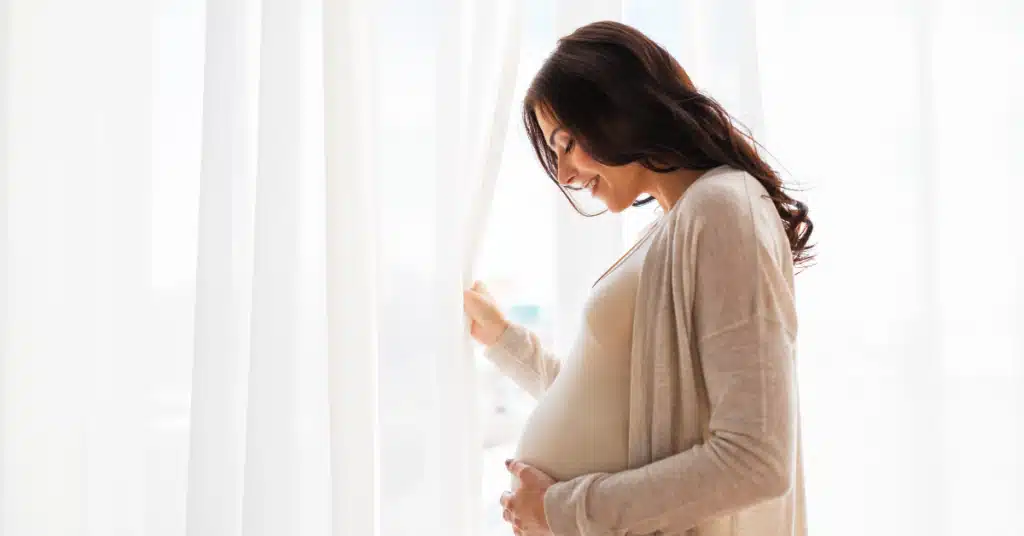All You Need to Know About Ovulation After Miscarriage
Experiencing a miscarriage can be a difficult and emotional time for women, as it may also raise questions about fertility and ovulation.
Ovulation is when a mature egg is released from the ovary, traveling down the fallopian tube for potential fertilization by sperm.
After a miscarriage, it’s normal to wonder when ovulation will resume and what signs to look for.
In this article, we will learn the signs of ovulation after miscarriage and what to expect when trying to conceive again.
Signs of ovulation after miscarriage
According to research, ovulation can resume as early as two weeks after a miscarriage, although it may take longer for some women.
The timing of ovulation may vary based on factors like pregnancy length and individual menstrual cycles.
One of the most common signs of ovulation is a change in body temperature, which can be tracked using Basal body temperature (BBT) monitoring.
Post-miscarriage, signs of ovulation may include stretchy, clear vaginal mucus like egg whites, cramping on either side and a slight libido increase.
Watch for these signs, similar to those before a pregnancy loss, to identify ovulation. Keep track of your menstrual cycle for better understanding.
Bleeding during ovulation after miscarriage

It is a common concern for many women to bleed during ovulation after a miscarriage.
Women may experience some bleeding after pregnancy loss, and ovulation may occur around two weeks into the new cycle.
Spotting can occur for up to four weeks post-miscarriage. As bleeding diminishes and hormone levels normalize, your menstrual cycle will gradually resume.
Signs of ovulation following a miscarriage will be the same as before pregnancy loss, including abdominal cramps, breast tenderness, and clear, gloopy vaginal discharge.
Yet, more reliable methods for predicting ovulation include LH testing and monitoring Basal Body Temperature(BBT).
Those with irregular cycles prior to pregnancy might continue to experience irregularities post-miscarriage.
How soon can you conceive after a miscarriage
According to various sources, it is possible to conceive as soon as two weeks after a miscarriage.
The timing of ovulation varies based on factors like pregnancy duration and individual menstrual cycles.
Some studies suggest that getting pregnant within 1 to 3 months after a miscarriage may have a better chance of a successful pregnancy.
Take the time you need to be both physically and emotionally prepared before attempting to conceive again.
After a miscarriage, the recovery time for your body can vary, ranging from several weeks to a month or even longer.
This duration depends on the type of miscarriage and whether medical intervention is necessary.
After a miscarriage, if you usually have regular periods, expect your next period in about 4-6 weeks.
However, ovulation may occur before that, potentially making you fertile in the first month after a miscarriage.
The odds of a successful pregnancy post-miscarriage

According to various sources, the chances of having a successful pregnancy after a miscarriage are generally good.
One in five may face another miscarriage, and the likelihood of additional pregnancy loss is low.
Conceiving within 1 to 3 months after a miscarriage enhances the likelihood of a successful pregnancy.
It’s crucial to ensure both physical and emotional readiness before attempting to conceive again.
If you have any concerns about your chances of having a successful pregnancy after a miscarriage, talk to your doctor.
Conclusion
In navigating the complexities of ovulation after a miscarriage, understanding the signs and timing becomes paramount.
Research suggests ovulation can resume as early as two weeks post-miscarriage, with factors like pregnancy length and menstrual cycle influencing variability.
Signs, including changes in body temperature, cervical mucus, and libido, offer indicators.
Conceiving within 1 to 3 months may enhance success, with almost 85% of women experiencing healthy pregnancies after a miscarriage.
While one in five may encounter another miscarriage, the overall chances of success are promising.
Prioritize being physically and emotionally ready, seeking personalized care, and consulting healthcare providers for a confident journey to a successful pregnancy.
Frequently Asked Questions
When do you ovulate after an abortion?
After an abortion, ovulation may resume within two weeks, but individual factors can vary in timing. Tracking signs such as body temperature and cervical mucus helps monitor ovulation. For personalized guidance and contraception discussions, consult your healthcare provider.
How soon can you get pregnant after a miscarriage?
Conception is possible as early as two weeks after a miscarriage. Factors like pregnancy length and menstrual cycle influence ovulation timing. It’s advisable to wait until you are emotionally and physically ready.
Can you get a false positive ovulation test after miscarriage?
Yes, a false positive is possible after a miscarriage. Hormone levels may fluctuate, affecting ovulation test results. Consult with your healthcare provider for accurate guidance on tracking ovulation and fertility after pregnancy loss.
Can you skip ovulation after a miscarriage?
Yes, it’s possible. Ovulation may be delayed or irregular post-miscarriage due to hormonal fluctuations. Track your menstrual cycle and consult with a healthcare provider for personalized guidance on ovulation and fertility following pregnancy loss.
WowRx uses only high-quality sources while writing our articles. Please read our content information policy to know more about how we keep our content reliable and trustworthy.






